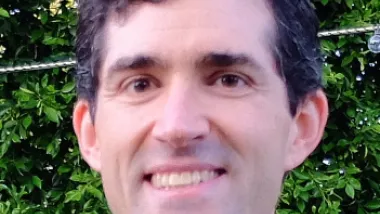I wasn't even in Los Angeles yesterday, and for once I'm glad. Everything from my Facebook feed to the morning headlines told me that traffic on the Westside yesterday afternoon was so awful that only a parade of obscenities accompanied by words like "cluster" and "show" would have sufficed to describe it. Hardened locals were driven nearly to tears behind the wheels of their unmoving cars. The president was in town.
I wasn't even in Los Angeles yesterday, and for once I'm glad. Everything from my Facebook feed to the morning headlines told me that traffic on the Westside yesterday afternoon was so awful that only a parade of obscenities accompanied by words like "cluster" and "show" would have sufficed to describe it. Hardened locals were driven nearly to tears behind the wheels of their unmoving cars.
The president was in town.
This happens every time a president visits, and it doesn't matter which party is in power. The wealthy neighborhoods of the Westside are, understandably, fertile fundraising grounds, whether it's W., Obama, or whomever else is in the White House. So when he visits, the president first does a little business in the city during the day and then, when evening comes, up come the barriers and traffic breaks and the motorcade heads to the hills. This can last for hours.  For what gain, then, does the president tie up a few hundred thousand commuters? ONE. MILLION. DOLLARS.
For what gain, then, does the president tie up a few hundred thousand commuters? ONE. MILLION. DOLLARS.
That's right. Obama raised $1 million at his dinner last night. Most of that money is going to the DNC. But just to put it in perspective, that's about 1/500th of the cost of the average presidential campaign these days.
I'm writing mainly to illustrate the absurdities of American campaign finance and not about urbanism per se, but doing so through the perspective of urbanism is as good a method as any. What we need to realize here is that in the course of following the rules of American campaign finance, President Obama actually cost the city of Los Angeles far more than he reaped. (And obviously Los Angeles is not the only city that bears this burden.)
Let's set aside the surely staggering cost of security, police, Highway Patrol, bomb squads, etc. (which cities are technically obligate to spend in return for receiving federal funds). Conservatively, if 200,000 Westsiders suffered an average of an extra hour of congestion yesterday afternoon, then according to the Texas Transportation Institute's estimate (pdf) that an hour in L.A. traffic is worth $15 per person, then raising Obama's lousy $1 million cost the citizens of Los Angeles a collective $3 million.
Of course, the funding streams that feed into commuters' wallets have nothing to do with those that feed into a president's fundraising account. But, even so, if Obama had stayed home and gotten his $1 million from, say, a federally administered pool of campaign money, then Los Angeles would be $3 million richer and (slightly) less neurotic.
As I said, this piece is more about campaign finance than about urbanism. But if ever you need reason to consider campaign finance reform, all you need to do is imagine all those cars backed up on Wilshire, Sunset, Santa Monica, and the 405 while black limousines speed towards Bel Air.

Planetizen Federal Action Tracker
A weekly monitor of how Trump’s orders and actions are impacting planners and planning in America.

Chicago’s Ghost Rails
Just beneath the surface of the modern city lie the remnants of its expansive early 20th-century streetcar system.

Amtrak Cutting Jobs, Funding to High-Speed Rail
The agency plans to cut 10 percent of its workforce and has confirmed it will not fund new high-speed rail projects.

Ohio Forces Data Centers to Prepay for Power
Utilities are calling on states to hold data center operators responsible for new energy demands to prevent leaving consumers on the hook for their bills.

MARTA CEO Steps Down Amid Citizenship Concerns
MARTA’s board announced Thursday that its chief, who is from Canada, is resigning due to questions about his immigration status.

Silicon Valley ‘Bike Superhighway’ Awarded $14M State Grant
A Caltrans grant brings the 10-mile Central Bikeway project connecting Santa Clara and East San Jose closer to fruition.
Urban Design for Planners 1: Software Tools
This six-course series explores essential urban design concepts using open source software and equips planners with the tools they need to participate fully in the urban design process.
Planning for Universal Design
Learn the tools for implementing Universal Design in planning regulations.
Caltrans
City of Fort Worth
Mpact (founded as Rail~Volution)
City of Camden Redevelopment Agency
City of Astoria
City of Portland
City of Laramie






























